The starting point for each post in this blog series has been the considerable challenges today’s CMOs and CXOs face in delivering a personalized and connected customer experience, and the external partners they turn to for help in tackling those challenges.
Along the way, we’ve asserted that in-housing partners like Filter – by virtue of their deeply integrated service model, flexible and scalable solutions, operational focus, inherent transparency, and other unique characteristics – offer key advantages over other collocated solutions such as staff augmentation firms, on-site agency or consultancy offerings, and freelance resources.
But marketing leaders have another option at their disposal: taking a greater if not full portion of their work away from any eternal partner and building a robust in-house organization to handle the work on its own.
In-Housing Continues to Gain Momentum
Indeed, one of the most significant shifts in the business landscape over recent years has been the move to in-house marketing – bringing capabilities once outsourced to an agency, or a network of agencies, inside the organization. In its late-2018 report, the Association of National Advertisers (ANA) shared survey results that showed 78 percent of its members reported having some form of an in-house agency that year, versus 58 percent in 2013 and 42 percent in 2008.
As a 2020 report by MediaLink and WARC notes, “MediaLink Managing Director Donna Sharp said that the in-housing topic comes up on just about every one of her discussions with brands. Marketers want to know whether they should consider shifting some assignments in house, whether they should revise how they’ve already done so, or both.”
In-housing can be an empowering, positive move that enables greater speed, more agility, and better decision-making. Ultimately, it fosters the internal collaboration and control needed to achieve digital maturity and transformation.
The Traditional Approach to In-Housing is Not an Easy One
But in-housing brings its own set of significant challenges. The myriad organizational and resourcing hurdles, business and financial risks, and other roadblocks to building sustained excellence hobble many in-house agencies and keep others from living up to their full promise and potential.
While the ANA research cited above shows more and more US brands have created some kind of internal marketing organization, one of the central themes that emerges from an array of studies and anecdotal reports is that in-housing is far more challenging than many companies initially assume, and tougher to sustain – even after months and years of finessing and fine-tuning.
“For every instance [of brands succeeding with their own in-house agency], there appears to be a counter caveat,” is how the MediaLink/WARC report summarized the situation.
Brands contemplating in-housing in today’s accelerated environment, therefore, are wise to consider some of the hurdles and unanticipated pitfalls other organizations have faced when traveling this path:
Building the Organization, Processes, Management Layers – Good intentions aside, a poorly conceived or underfunded in-house entity can end up a lackluster marketing resource for the CMO and an impediment to growth and change. A joint Forrester/In-House Agency Forum (IHAF) survey1 reveals that many in-house agencies are overworked, underfunded, and underappreciated.
The central challenge companies face when embarking on the in-housing journey has to do with process, as in: How do we build effective processes for this new in-house organization? How do we know which processes are right for our circumstances? How do we implement, train on and measure them? How do we get our internal teams and other stakeholders on the same page?
MediaLink Managing Director Mark Wagman gave this illustration in the MediaLink/WARC report: “For example, media buying involves a lot of back-office duties. Do you know how to deal with these? Do you want to build and manage your data infrastructure? Is your finance team ready to deal with invoices from media companies? Do you even know what a data lake is?”
Solving these problems from scratch is demanding, expensive, time-consuming work. The learning curve is steep – and even CMOs who get in-house processes right must invest and re-invest in the infrastructure, operations and management layers. Unfortunately, many remain unaware of their shortcomings until the in-housing transformation is well underway.
Overcoming Organizational Rigidity – When marketing leaders decide to onboard new capabilities, technology, and staff (and simultaneously rethink their approaches to branding, marketing, and the creative process), getting the new department to function coherently with the broader organization is essential.
“If you’re trying to plug a new in-house team into an old school model, you may find out that the rest of your ecosystem needs to change too.”
– Donna Sharp, Managing Director, MediaLink
Many companies are tightly focused on nurturing and advancing core business strengths. As a result, they are unable to easily adopt the new thinking, processes, and systems required to build a thriving in-house marketing or XD entity. Existing planning and operational processes may be out of sync with the demands of new CX initiatives. CMOs themselves – no matter how thoughtful, well-intentioned and customer-obsessed they may be – often tend to show a bias toward internal systems and troubleshooting over transformational customer-centric approaches.
As MediaLink and Warc assert in their report, a brand won’t get very far if the rest of its organization is structured in an archaic way. Going in-house with marketing can end up revealing that a company needs to reorient the way it operates overall. MediaLink’s Wagman poses that many brands likely run into “hiccups, internal politics or cold feet.”
In the end, building an in-house agency can become a confounding exercise in triangulation: marketing leaders seek to align their team to the dynamic external landscape of CX transformation, where change is perhaps the only constant. At the same time, they need to sync their processes to the internal rhythms, processes, and expectations across other parts of the enterprise. Not every company has the luxury of time or the patience to work through this long and rocky process to get it right.
Creating the Culture – Fostering a vibrant, empowering culture for your in-house agency is also critically important. “If you don’t spend time changing people’s behaviors, if you don’t spend time changing culture and how people make decisions, all of this falls flat,” notes PulsePoint partner Michael Gale in Forbes.
But many firms with a well-established or entrenched corporate culture find it difficult to sufficiently enable a new in-house organization with the cultural framework, practices, and mindset it needs to grow into a fully contributing, enduring resource.
“If you’re going to be successful in your transformation or in your disruption journey, then culture is really the weapon of choice. The reality is there’s a need to almost blow up many of the norms in place today and to restart the culture.”
– Ken Tombs, Global Head for Infosys Consulting, quoted in Forbes Insights
Creating and sustaining a thriving, high-functioning in-house agency culture through time requires extensive know-how, vision, and planning. It also takes thoughtful staff engagement strategies, development of specialized organizational and management practices, ongoing financial support – and above all else, time.
Building High Digital Proficiency – As CX innovations disrupt business and drive new ventures, expertise in fast-evolving digital disciplines is now essential to building and maintaining a strong competitive advantage. Amid the resulting talent crunch, companies must often hire talent for disciplines in which they’ve had little experience. Many internal recruiters struggle to fill these needs because there’s a knowledge gap in terms of knowing what expertise is required, what roles will deliver it, how to assess the talent to fill those roles – and how to even find them.
“Unfortunately for most organizations, the most critical talent needs are also the most rare and expensive to hire for,” said Matt Shinkman, Managing Vice President and Risk Practice Leader at Gartner (Bloomberg, July 2019). “Adding to this challenge is the fact that ongoing disruption will keep business strategies highly dynamic, adding complexity to ongoing talent needs.”
Indeed, talent shortage has now been flagged as a major business risk for companies: Gartner’s Q418 survey of senior executives reports that concerns about “talent shortages” outweighed those around “accelerating privacy regulation” and “cloud computing,” which were the top two risks in the previous Emerging Risk Monitor.
Maintaining That Proficiency – Building digital aptitude is one thing; sustaining that proficiency is another challenge altogether. It requires a consistently trained and always-learning staff, leveraging the latest technologies and tools, and evolving processes that keep pace with content and channel demands on an ongoing basis. Career pathing must be supported, cross-pollination enabled, and attrition effectively addressed.
As the MediaLink/WARC report asks, “How, for example, will companies manage the growing compensation gaps and differing employee experiences between employees with extremely scarce and valuable skills (e.g., data scientists) and employees whose roles are most likely to change due to the adoption of new technology?”
Again, many CMOs are unaware of the considerable work, costs, and resources required to sustain digital mastery and manage the workforce that drives it until the in-housing transformation is well underway, jeopardizing the opportunity for long-term success.
Staying Agile Through Time and Change – Companies that take on the heavy lift of traditional in-housing must ultimately gain the agility to deal with changes in scope and scale of work. Part of that challenge is keeping pace with the CX transformations as trends and customer expectations change. Changes are also driven by the vagaries of the market – seasonal fluctuations for example, or shifts across channels, technologies, and customer habits Still others are driven by internal business decisions or broader economic conditions that may bring financial pressure or require strategic realignments.
Staying agile and scaling up and down to match these dynamics means CMOs need to have agile teams at the ready – teams (with necessary specialists in place) that can ramp up quickly, meet specific demands for a week, or a month, or more, and then disengage and move to other assignments. It also means in-house departments must have the infrastructure and tools needed to solve urgent problems at the drop of a hat. Constantly re-configuring capabilities across internal and external resources, without a strategic framework to guide it, is inefficient at best. It can also quickly lead to the steady attrition of important in-house talent.
Keeping Focus on Core Business Competencies – Look around and you’ll notice that most top digital companies achieved success by innovating around a particular product or service. Yes, they have strong, agile cultures and fluid workplace processes, but they apply those to advancing their mastery of a core set of digital competencies (e.g., around data science, AI, e-commerce, blockchain, etc.) essential to honing their competitive edge.
This is fairly obvious. What’s not so apparent is that success with a product or service does not necessarily translate into effective marketing, customer acquisition, or customer retention. When a company’s diligent business focus is forced to shift to other pressing matters (the unforeseen demands of building an in-house agency, for example) the entire business can be destabilized and set back.
Companies that launch an in-housing initiative in a poorly conceived or inadequately funded manner – and then try to course-correct – may find themselves overloaded with competing demands until, ultimately, the ball is dropped, and that critical edge is irrevocably lost.
And Yes, the Costs – While statistics reveal that more and more companies are taking digital marketing capabilities in-house, the move is nonetheless fraught with anxiety for most CMOs. If their main rationale is, “we think we can do these things less expensively,” they would be well served to go back to the drawing board.
“In-housing isn’t necessarily cheap,” notes MediaLink’s Sharp in their report. “We are almost always asked, ‘How can we turn this into savings?’” Sometimes marketers are surprised by her answer. “‘Maybe never.’ In fact, sometimes in-housing can cost a client more. While such a move should pay off over time, it’s not always as clear cut as ending work with an expensive agency and hiring a few inexpensive, junior workers.”
Often, building a large in-house marketing of XD organization is more difficult than CMOs and CXOs might anticipate. In the MediaLink/WARC report, Steven Fund (Intel, Staples) emphasized that marketers “have to look at the needs of the business and set up [their in-house agency] to deliver against them.”
They just may also want to explore a new and different approach to going about it – and consider how an experienced in-housing partner can simplify and accelerate their path to in-house success.






